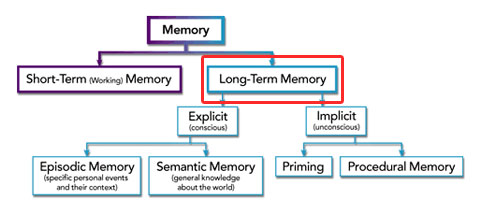Anything that you remember happening more than a few minutes ago is referred to as your long-term memory. These memories can last for many years or for just a few days.
The reality is that not all long-term memories are created equal. Some memories are stronger than others. Memories that are stronger enable you to recall an event, fact, or procedure on demand – for example, the capital of Canada is Ottawa. Weaker memories however often require prompting or reminding in order to actually come to mind.
Your long-term memory is not static either. That is, you do not simply imprint a long-term memory and leave it unaffected. Instead, over time your memories are often revised and even merged with other memories. There is even the chance that information shared by others about a certain memory will be incorporated into your version of the memory. The impact of having memories that are not strictly constant is that they may not always be reliable.
Long-term memories can be in many different forms and are not created and stored in a single part of the brain. In fact, processes for forming and retaining long-term memories are spread across multiple regions of our brains.
‘Explicit’ memory and ‘implicit’ memory are the two major subcategories of memory. The things that you consciously remember such as a specific fact or a particular life event are considered explicit memories. The things that you once learned to do but no longer require conscious thought to remember - like riding a bicycle – are considered implicit memories.
Understanding the different types of long-term memory can be helpful but, in reality, the division between implicit and explicit memory are fluid and often co-mingle.
You can view our implicit (non declarative) memory and explicit (declarative) memory pages to learn more about the various types of long-term memory.







 English
English
 Français
Français


